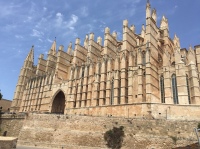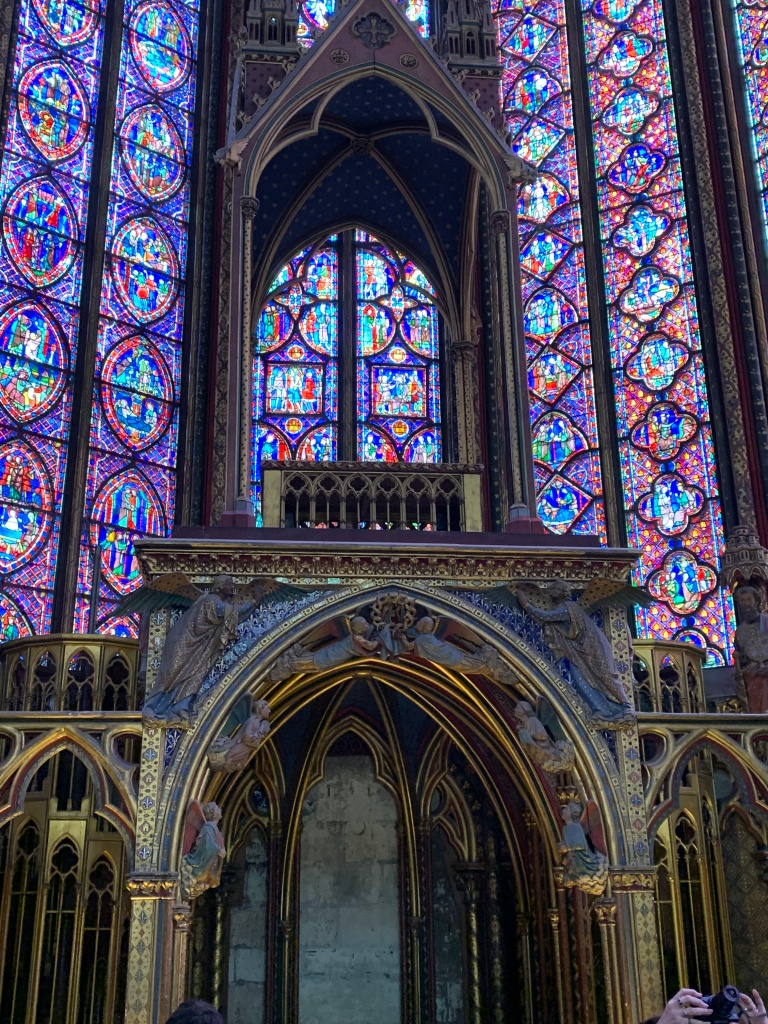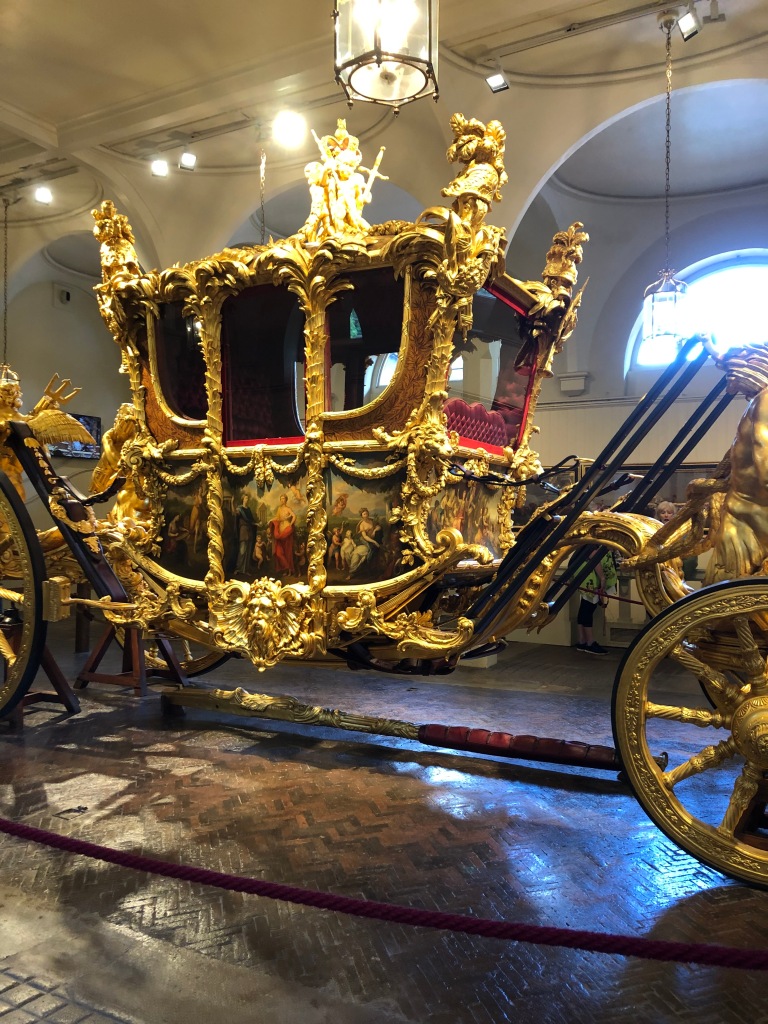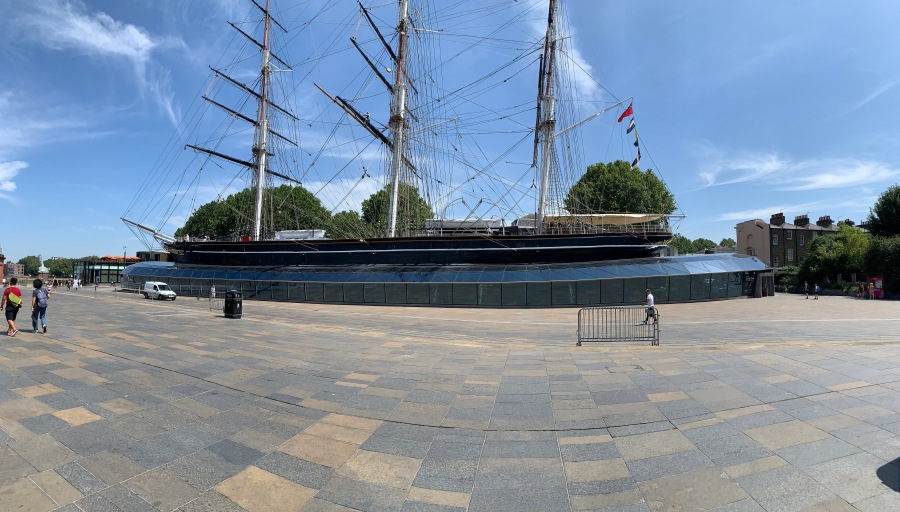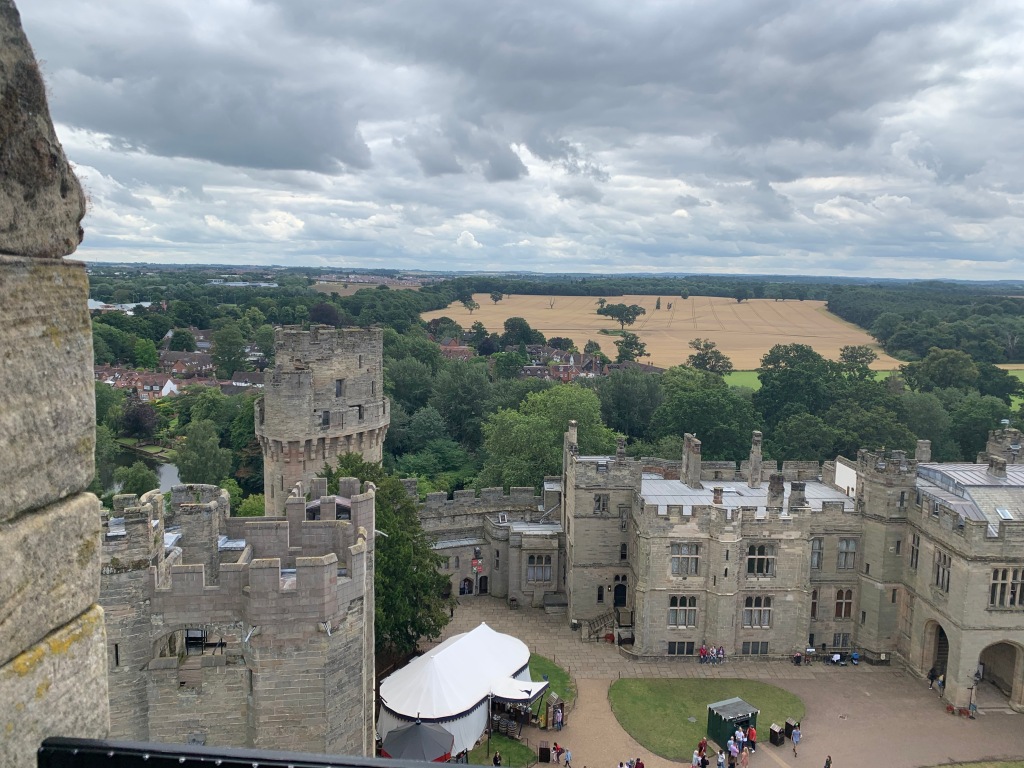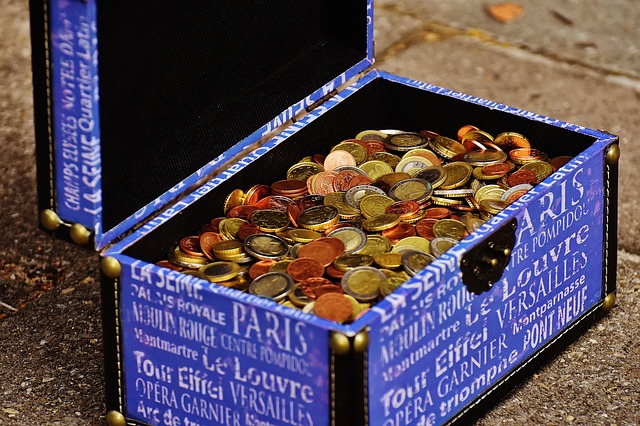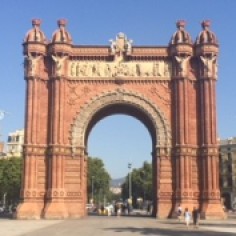Ah Paris, the city of romance! Jim and I had to visit the Eiffel Tower while in Paris. We walked around the park, and even after 29 years of marriage, we couldn’t resist having our picture taken kissing in front of front of the famous tower. As all things French tend to be, the tower is elegant even though it was designed for use as a radio tower. We chose not to go to the top of the tower or have a meal in one of the restaurants simply because of expense. We don’t mind spending money, just not at places that are too touristy, and the Eiffel Tower is touristy and expensive. Still, it is one of the landmarks that is a must when in Paris.

When in Paris, you may want to also visit the Arc de Triumphe, the arch built by Napoleon to celebrate his wartime successes. Again, the Arc is touristy, but highly amusing. It’s in the middle of a traffic circle that is a total free for all. Cars zoom in from several entrances and join the fray with no marked lines to delineate the lanes. They then have to zip back out of the tangle of cars in time for the exit or get stuck going round and round the circle. Jim was endlessly amused as he watched. Jim and I grew up in a rural area with open roads and few cops, so we both know how to make a car fly, but neither of us would have the guts to try the circle around the Arc de Triomphe.

After watching the antics around the Arc, we continued down the Champs de Elysees. We joined a city tour, and our tour guide gave us the run down on the history of the Champs, as it is affectionately called. The Champs was built as a royal promenade flanked by gardens, but became an area for shopping and entertaining. It was a place to see and be seen. As we passed the stores along the Champs, there are still many beautiful designer stores, including the Louis Vuitton flagship store, but our tour guide lamented the two story Five Guys burger joint among them, saying, “The Champs was a place to see and be seen. It was always elegant. Now we have Five Guys”. A two story Five Guys was not what we expected on the Champs, and I wondered about our American influence.
Still, we went back to the Arc and the Champs after our city tour so we could stroll along and look at some of the stores and have lunch. If you love Louis Vuitton, here is your sweet spot. I love clothes and jewelry, but, I also don’t like to pay just for a name. The fit and the quality of clothing means more to me than the label. We found a couple Zara stores that had great items for very reasonable prices, so I bought myself a pretty shirt, not a touristy tee in one of the Zara shops.
Beyond the touristy aspects of Paris is the Louvre, the most famous museum in the world. The Louvre was once a palace for the kings, but now houses incredible collections. It is impossible to see the entire Louvre all in one day. The Louvre is well worth visiting, but, if you choose to explore the Louvre, here are some helpful hints. First, buy your tickets well ahead of time, especially if you want to go first thing in the morning. The Louvre only allows so many people in at a time, so if you wait, you may be assigned a later time than you wanted. When you go, be ready for long lines. We took the Metro right to the Louvre so getting there was easy. When you arrive at the Louvre, you walk through a small mall of shops and then wait in a waiting area under the upside down small pyramid. We waited an hour in line, so be prepared to get there early. Once you go through the line and security, you find yourself in what is called, the carousel. The carousel is under the large glass pyramid and is the hub of the Louvre. The entrances to the wings all lead from the carousel. There is also a gust services desk, an upscale restaurant, and a cafe. Up a flight of stairs is one more cafe and a Starbucks, all with limited seating. Trust me when I say this. Wear comfortable shoes. I mean it ladies. I wished I hadn’t worn those cute sandals. Sneakers, trainers, tennis shoes, whatever you want to call them, are your best choice of shoes because you will be on your feet.


You have to go to the the entrances for the wings and another security check to get into the collections. No water bottles or food are allowed for obvious reasons. Don’t try to get them past security. You will be told to throw them away. We waited another forty-five minutes in line to get into the Richelieu Wing which is where the the most famous painting of all is housed, Leonardo Da Vinci’s “Mona Lisa”. The “Mona Lisa” was painted in the early 1500s and is considered one of the most valuable paintings in the world. Jim, like many others, was surprised that it wasn’t large. It is a fairly small painting. The “Mona Lisa” is behind a rope barrier. Guards are present to make sure nothing happens to the painting. After you see the “Mona Lisa”, there are rooms and rooms of paintings, mostly of the French masters in the Richelieu wing. Then there is statuary from the Greek and Roman eras including the famous Venus di Milo, the Greek statue of a woman beautifully preserved except for her missing arms. Within the statuary is a statue attributed to Michelangelo. There are at least four floors of room after room of art within the Richelieu Wing alone.
To go to the next wing, or to take a break and get some coffee or something to eat, you have to come back to the carousel, which is extremely inconvenient when you are on the top floor of the Richelieu Wing and have to come down through 4 escalators and then wait in line to go through a checkpoint and back up all the escalators again when you want to go back in. We took one such coffee break, and after having to come back out of the Richelieu Wing and and wait in line yet again to get back in, Jim was frustrated. He told me that he wasn’t doing that again, so we needed to see everything we wanted to in that wing before going back out. Once we left for lunch, we were done with that wing. It was enough of an effort that I had to agree with him.
We went on to see another wing that housed the Italian artists and saw sketches of Leonardo and Michelangelo. We also went through a wing where the rooms were kept as they had been when the Louvre was a palace. The furniture from the 1600s and 1700s had been preserved incredibly well. The furniture of those rooms was rich, elegant, and looked so new, it could be sold as such even though it is centuries old, a testament to how well built furniture was in those days and the care of the Louvre workers. The ceilings were recessed and adorned with breathtaking murals of rich and vibrant colors. It is hard to imagine living in such splendor on a daily basis, but this was the palace of the French monarch.
Jim and I spent one day at the Louvre. I wish we could spend even more time there because I know we only saw in our one day a fraction of the collections. I do have to admit that out of all the museums we have done, Jim and I both agreed that the Louvre is the most extensive, but also the most difficult. So far, we have been to the Smithsonian, the Vatican, the British Museum, the Royal Ontario Museum and the Asian Museum in San Francisco. The Louvre is the one that takes the most patience and has the strictest rules. Make sure you are patient and can wait in long lines, wear sneakers, and prepare to go for long periods within each wing, especially the Richelieu Wing without a water bottle or food. Know that there are limited cafes within the Louvre and that they have limited seating. The one restaurant within the carousel was around 30 euros for lunch. The cafe upstairs near Starbucks was 15 Euros for a hamburger and fries. We had sanwiches from the cafe downstairs which were good, but still cost around 10 Euros each and ended up sitting on the floor with many other people. My other suggestion is to go during low season, when children are in school, and there aren’t as many tour groups. You might save yourself the trouble of waiting in long lines.
Even though Jim and I both thought that the Louvre was the most difficult, it is well worth visiting. Go and see the remarkable, the incredible, the things that are a testament to how wonderful and great humanity can be.
